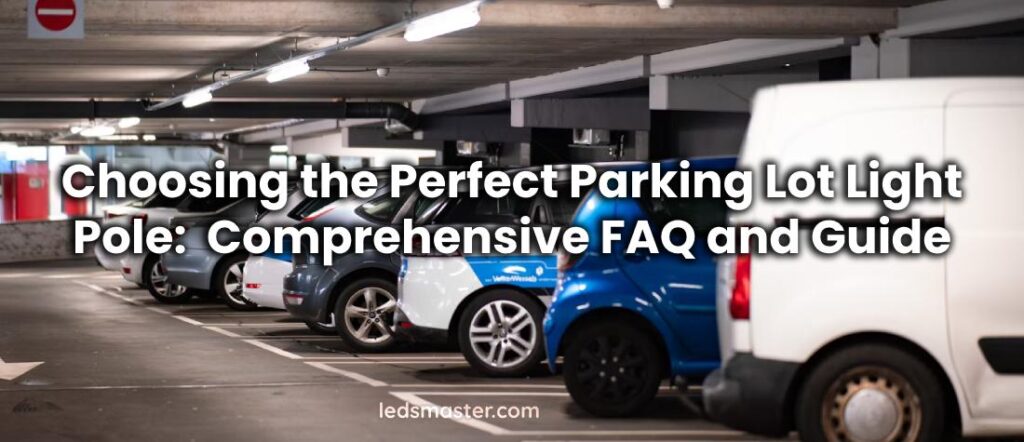If you’re a parking lot owner or considering developing a plot of land for one, numerous factors demand your attention. These include selecting contractors for paving, sourcing materials, and more. However, among the critical considerations for parking lot ownership is the choice of light poles. Various factors influence the selection of the most suitable light poles for your or your company’s parking lot. In this article, we’ll delve into these factors and assist you in finding the perfect light pole solution.
Table of Contents
ToggleSelecting the Ideal Parking Lot Light Pole
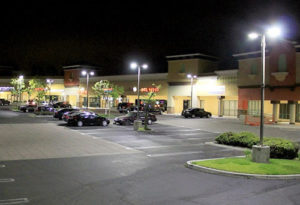 Before diving into the selection process, it’s crucial to thoroughly assess the dimensions and characteristics of your parking lot. The size of the lot, its layout, and the level of activity during nighttime hours all play pivotal roles in determining the most suitable light pole for your specific needs. A larger parking lot with heavy nighttime traffic, for example, may require taller poles spaced strategically for optimal coverage, while a smaller lot might suffice with fewer, lower-height poles.
Before diving into the selection process, it’s crucial to thoroughly assess the dimensions and characteristics of your parking lot. The size of the lot, its layout, and the level of activity during nighttime hours all play pivotal roles in determining the most suitable light pole for your specific needs. A larger parking lot with heavy nighttime traffic, for example, may require taller poles spaced strategically for optimal coverage, while a smaller lot might suffice with fewer, lower-height poles.
If you’re unsure about where to procure a parking lot light pole, it’s worth considering specialized companies that not only offer a variety of products but also provide installation services. These companies can offer tailored solutions based on your parking lot’s requirements, ensuring that the installation is done correctly and efficiently. Additionally, mainstream websites and platforms like eBay may also offer options for purchasing light poles, although it’s essential to carefully consider the level of professional support and expertise available when opting for such sources.
Now, let’s delve into the key considerations to keep in mind when purchasing a parking lot light pole:
Material Selection (Aluminum vs. Steel vs. Concrete)
When considering light poles, you’ll often find they’re typically made of aluminum, steel, or concrete. Each material has distinct advantages and disadvantages worth exploring.
Steel Poles
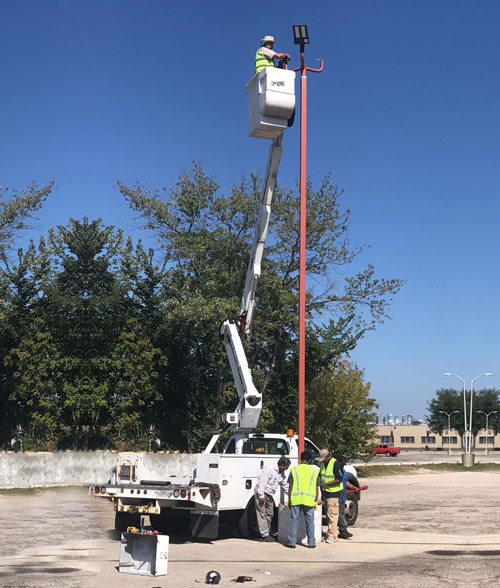 Steel poles stand out for their affordability and reasonable lifespan. They offer flexibility in circuit arrangements and are inherently robust and durable.
Steel poles stand out for their affordability and reasonable lifespan. They offer flexibility in circuit arrangements and are inherently robust and durable.
However, like most steel structures, they’re prone to rust and corrosion, necessitating frequent maintenance. This ongoing upkeep can increase operational costs for parking lot management.
Concrete Poles
Concrete poles excel where steel poles fall short. With an impressive lifespan of up to 50 years, they boast exceptional strength and require minimal maintenance due to their immunity to rust and corrosion.
Yet, installing and transporting concrete poles pose logistical challenges. Their initial cost is higher compared to steel, and their lack of recyclability and less stylish appearance are notable drawbacks.
Aluminum Poles
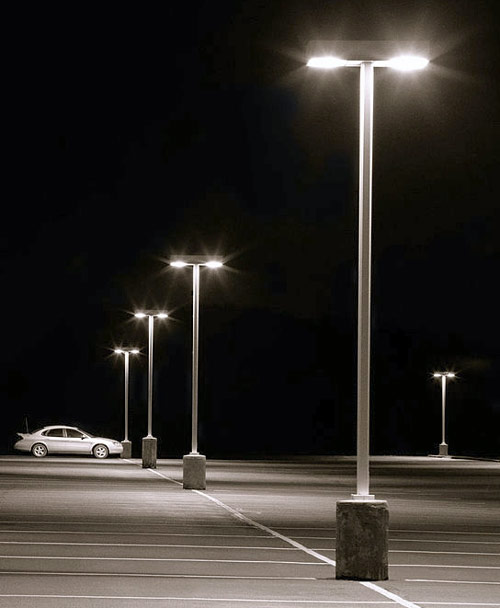 Aluminum poles offer a lightweight solution with corrosion resistance, requiring minimal maintenance. They’re easy to transport, aesthetically pleasing, and can endure for over 50 years, akin to concrete poles.
Aluminum poles offer a lightweight solution with corrosion resistance, requiring minimal maintenance. They’re easy to transport, aesthetically pleasing, and can endure for over 50 years, akin to concrete poles.
However, their suitability for taller installations may be limited, and they’re not as robust as steel poles, posing concerns regarding structural strength.
Each material presents unique trade-offs, demanding careful consideration to align with specific project needs and priorities.
Height Consideration
Selecting the appropriate height for your light poles is crucial to ensure optimal coverage and illumination across your parking lot. Factors such as the size and layout of the lot, as well as the desired level of brightness, dictate the ideal height range. Taller poles may be necessary for larger lots to provide adequate lighting, while shorter poles may suffice for smaller areas.
Weight Limitations
When choosing a light pole, it’s essential to consider the weight of the lighting fixtures it will support. Different materials have varying weight-bearing capacities, with concrete poles typically offering greater strength compared to steel or aluminum alternatives. Ensuring that the chosen pole can accommodate the intended lighting fixtures is essential to prevent structural issues and ensure long-term reliability.
Base & Adapter Compatibility
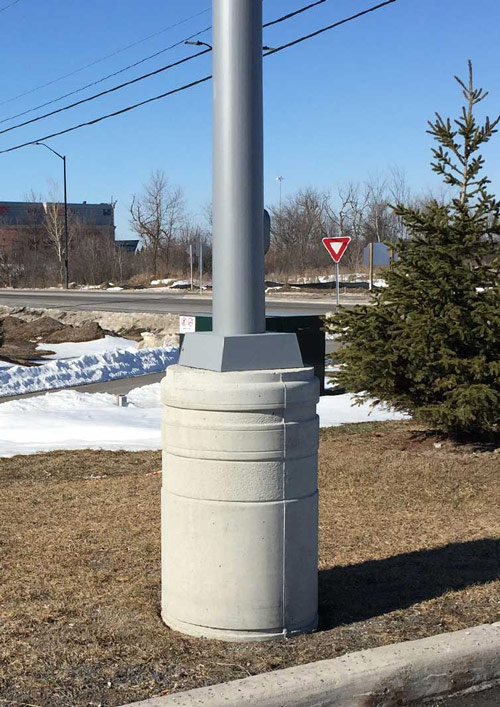 The base of the light pole plays a crucial role in providing stability and support. It’s essential to select a base that is compatible with the chosen pole and can adequately withstand the weight and environmental conditions. Additionally, considering factors such as corrosion resistance and ease of installation can help ensure a successful and durable lighting solution for your parking lot.
The base of the light pole plays a crucial role in providing stability and support. It’s essential to select a base that is compatible with the chosen pole and can adequately withstand the weight and environmental conditions. Additionally, considering factors such as corrosion resistance and ease of installation can help ensure a successful and durable lighting solution for your parking lot.
Additional Factors
In addition to material selection, height consideration, weight limitations, and base compatibility, several other factors warrant attention during the light pole selection process. These may include considerations such as pole diameter, surface type (e.g., concrete, asphalt), mounting options (e.g., direct mount or pole), voltage requirements, and any special features or customization options available.
By carefully evaluating these factors and considerations, you can make an informed decision when investing in a light pole for your parking lot.
Frequently Asked Questions about Parking Lot Light Poles
Determining Common Parking Lot Light Pole Heights
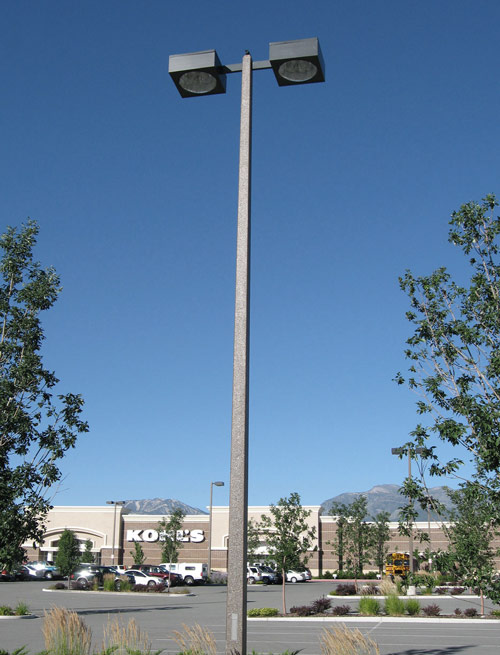 The height of a parking lot light pole varies based on factors like lighting category and regional regulations. Different regions have specific requirements regarding pole placement and height restrictions. Additionally, the number of lights per pole and their mounting height impact coverage. Before initiating a project, it’s essential to consider any maximum height regulations set by local authorities.
The height of a parking lot light pole varies based on factors like lighting category and regional regulations. Different regions have specific requirements regarding pole placement and height restrictions. Additionally, the number of lights per pole and their mounting height impact coverage. Before initiating a project, it’s essential to consider any maximum height regulations set by local authorities.
Effects of Incorrect Pole Heights in Parking Lots
The height of light poles in parking lots is influenced by the area’s characteristics. In densely populated regions, shorter poles can prevent excessive brightness, but more poles may be needed for adequate coverage. Conversely, in rural areas, taller and fewer poles can achieve similar consistency without concerns about excessive brightness. Mounting heights typically range from 12 ft. to 20 ft., but in some cases, they may extend as high as 35 ft.
Cost Considerations for Installing Parking Lot Light Poles
While LED lights may have a higher initial cost compared to halogen or high-pressure sodium lights, they offer significant advantages such as an extended lifespan of up to 80,000 hours. The estimated cost of a highway light pole ranges from US$2000 to US$3000, with additional expenses for installation services. Projects involving highways or bridges may incur an additional 20% cost.
Maintenance Requirements for Parking Lot Poles
The frequency of parking lot pole repairs depends on various factors, including burned-out bulbs, ballast issues, damaged capacitors, and photocell malfunctions. Hurricane seasons and summer rainstorms can also cause damage to pole light fittings, necessitating repairs by qualified electricians.
Distinguishing Between Ordinary and Decorative Light Poles
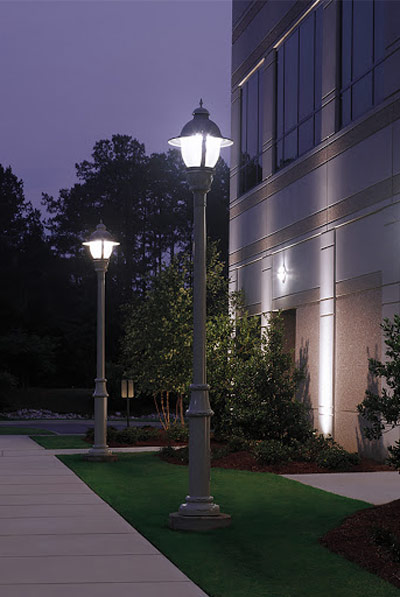 Ordinary light poles are typically the most cost-effective option, while decorative light poles offer versatility and aesthetics but are less secure. Decorative poles tend to be more expensive but are also more waterproof compared to ordinary poles.
Ordinary light poles are typically the most cost-effective option, while decorative light poles offer versatility and aesthetics but are less secure. Decorative poles tend to be more expensive but are also more waterproof compared to ordinary poles.
Choosing Between LED and Halogen Lights for Parking Lots
LED parking lot lights are generally preferable over halogen lights due to their lower heat production, energy efficiency, and longer lifespan. While halogen lights may be cheaper initially, LED lights offer long-term savings on replacements and energy consumption.
Determining Lumens Required for Parking Lot Lighting
The recommended lumens for parking lot lighting typically involve LED Parking Lot Light heads with around 20,000 lumens each, spaced approximately 15-20 feet apart on poles. However, specific requirements depend on factors like pole spacing and desired lighting intensity.
Conclusion
Selecting the perfect parking lot light pole entails a thorough assessment of factors like lot size, layout, and activity level. Material choice—aluminum, steel, or concrete—impacts durability and maintenance needs. Height, weight capacity, and base compatibility are crucial for effective lighting coverage and stability. LED lights are generally preferred for their efficiency and lifespan. By considering these factors, parking lot owners can make informed decisions for an optimal lighting solution.
To receive a complimentary consultation on parking lot light poles, please contact us at beatus@ledsmaster.com

